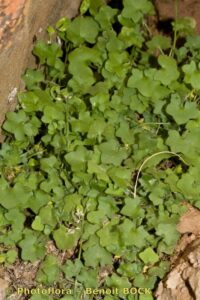How to Propagate Graellsia hederifolia

Unlocking the Secrets: Propagating the Enchanting Ivy Tree (Graellsia hederifolia)
The Ivy Tree, scientifically known as Graellsia hederifolia, is a botanical marvel. Native to China and Taiwan, this deciduous wonder captivates with its unique heart-shaped leaves that cling gracefully to walls and trellises, much like its namesake, the ivy. But this isn’t even the most impressive part! The Ivy Tree boasts a hidden talent: producing stunning, aromatic flowers that emerge from seemingly bare branches in late winter or early spring.
If you’re eager to welcome this enchanting plant into your own garden, propagation is the key. While it might seem daunting at first, understanding the nuances of propagating Graellsia hederifolia can be a rewarding experience.
Let’s dive into the two primary methods for propagating the Ivy Tree:
1. Seed Propagation: A Test of Patience
Propagating the Ivy Tree from seed is the most common method, though it does require a touch of patience and careful observation. Here’s how you can embark on this rewarding journey:
- Seed Collection: Collect the seeds in autumn once the pods have dried and matured. Splitting open the pods will reveal small, flat seeds.
- Stratification (Optional): While not strictly necessary, cold stratification can improve germination rates. Place the seeds in a moist paper towel within a sealed plastic bag and store them in the refrigerator for 4-6 weeks.
- Sowing: Sow the seeds in a well-draining seed-starting mix, covering them lightly with soil. Maintain consistent moisture and place the pot in a warm, bright location, but out of direct sunlight.
- Germination: Be patient, as germination can take anywhere from a few weeks to several months. Once the seedlings emerge, provide them with ample indirect light.
- Transplanting: Once the seedlings develop a strong root system and reach a few inches in height, transplant them into individual pots or your garden bed.
2. Semi-Hardwood Cuttings: A Quicker Approach
For those seeking a faster route to propagation, semi-hardwood cuttings offer an appealing alternative:
- Timing is Key: Take cuttings in late summer when the new growth has started to harden. Select healthy stems that are free from disease or pests.
- Prepare the Cuttings: Use a sharp, sterilized knife or pruning shears to make a clean cut just below a leaf node. Remove the lower leaves, leaving only a few at the top.
- Encourage Rooting: Dip the cut end of the stem in rooting hormone powder to promote root development.
- Planting: Plant the cuttings in a pot filled with a well-draining rooting mix, ensuring that the leaf nodes are buried. Water thoroughly.
- Creating a Humid Environment: Cover the pot with a clear plastic bag or a humidity dome to retain moisture and create a warm, humid environment.
- Root Development: After 4-6 weeks, gently tug on the cuttings to check for resistance, indicating root development.
- Transplanting: Once the roots are established, transplant the cuttings into larger pots or your garden.
Caring for Your New Ivy Tree Companions
Regardless of the propagation method you choose, providing your new Ivy Tree companions with the right care is crucial for their success:
- Sunlight: Ivy Trees thrive in partial shade to full sun, depending on your climate.
- Soil: Well-draining soil is essential to prevent root rot. Amending the planting site with compost can improve drainage and provide nutrients.
- Watering: While established plants are relatively drought-tolerant, regular watering is crucial during the first year after planting.
- Pruning: Prune the Ivy Tree in late winter or early spring to maintain its shape and remove any dead or diseased branches.
By understanding these propagation techniques and caring for your new Ivy Trees diligently, you can welcome these captivating botanical wonders into your garden, adding a touch of elegance and fragrance to your outdoor haven.